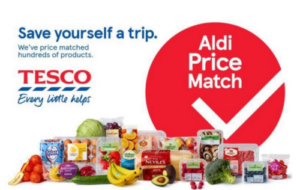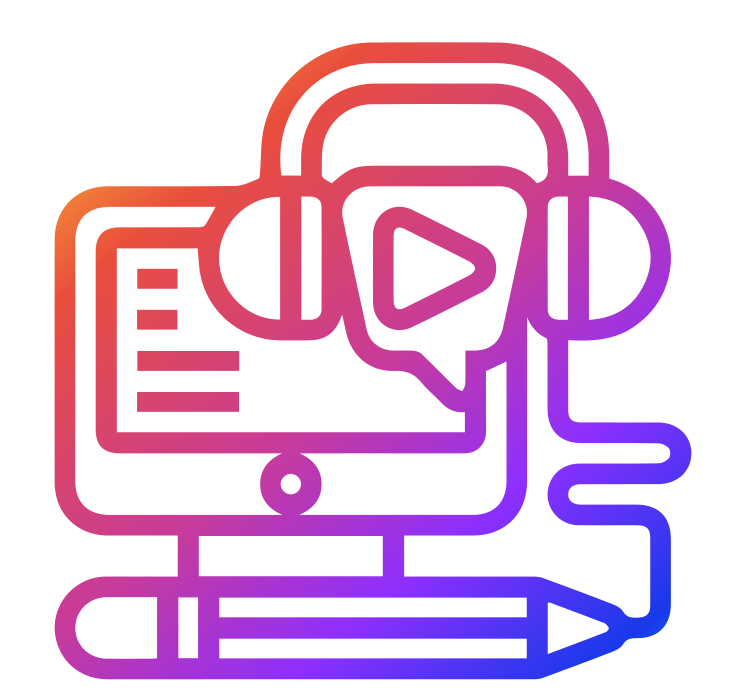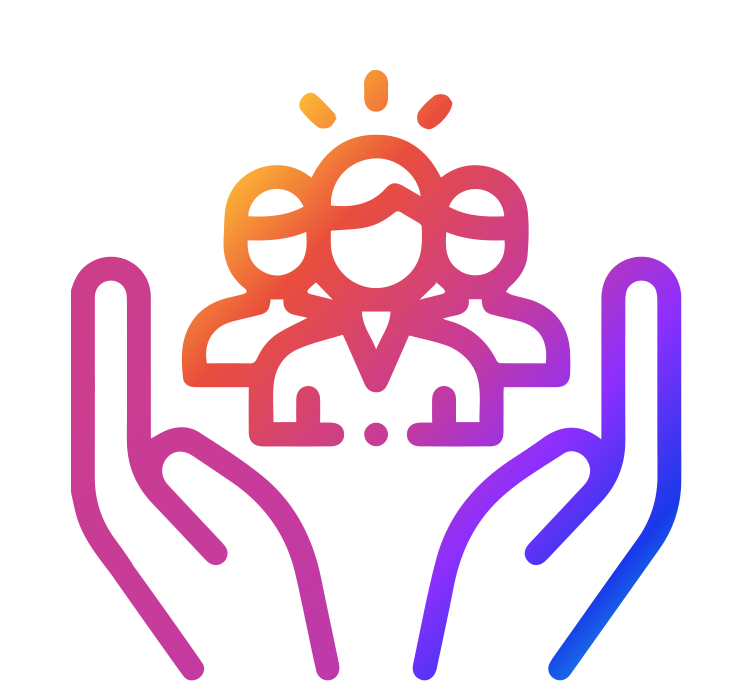Introduction
An increasing number of people are spending more time online, on social media, and on their smartphones, making digital channels a great way to raise awareness and build relationships. In fact, there has never been a better time to have digital marketing at the heart of your business activities.
What does digital marketing encompass, you might ask? Digital marketing is the part of marketing that uses digital tools, techniques, and platforms to understand, attract, reach, engage, convert, and retain customers. It is any form of communication that uses an electronic device, or channel to reach customers.
Here are a few benefits of digital marketing to consider:
· allows exhaustive access to customers’ needs and wants
· increased ability to select the customers you want through precision targeting
· measurable and cost-effective compared to ‘traditional’ marketing methods
· engaging way to connect with customers and grow relationships
· scalable way to grow your business beyond a physical location
Four components of digital marketing
When developing digital marketing strategy, there are four key components to consider: customers, channels, content, and consequence. Let’s start by looking at customers.
Part 1: Customers
Given the number of digital tools now available, the customer’s influence has certainly increased. With just a few clicks, they can compare your offering against that of your competitors, influence other customers with their reviews, and make purchases without even interacting with you. Delighting customers must, therefore, lie at the heart of your business. To achieve this, the first thing you need to do is understand your customers’ needs and preferences. Digital marketing tools can help in a number of ways, including:
· enabling you to ask questions and find out what customers are saying online about your brand or business on social media.
· allowing you to see the type of customers that visit your website, or those in the area who have searched online for your brand or business (through search tools such as Google Analytics).
· conducting online research about your competitors and what they are offering, so that you can generate ideas on how to improve your own offerings.
As with any other aspect of marketing, it is key to adopt a simple principle for your digital marketing activities, which is ‘to be where your customers are’. For instance, if most of your customers use Instagram, then make sure you have a good presence on the social networking service, likewise if the majority of your customers buy from a particular e-commerce platform, then ensure that your products are also listed on that platform.
Let’s look at four ways you can understand your customers better using digital marketing:
- Search tools
The first thing to do is to set up Google Alerts for keywords that are relevant to your business and brand, as well as topics of interest that could help you stay up to date on trends, in real time. I recommend you track key customers, companies, industries, local news, and any other areas you think might be relevant for you.
The next step is to look at Google Trends to find longitudinal data, or studies that observe the same sample over a sustained time period, as this will help gauge demand. Looking up popular searches will help identify upcoming trends. To get a sense of other relevant topics, look up related searches.
Another useful tool that collates Google search data is answerthepublic.com. It aggregates search results in relation to your search query, to show questions people are asking. Its data-visualisation tools show clearly what people are searching for. It can also help you dig deeper into each thread.
- Social listening
Let’s turn to automated social media listening tools in order to generate a more holistic understanding of consumer sentiment. These tools are frequently referred to as “the world’s largest and most open focus group”.
These platforms allow you to scan and analyse consumer conversations, posts, comments, shares, and likes that can be useful for providing insight into popular trends. Buzzsumo, Hootsuite, Sprout Social, and Sparktoro are a few of the tools available.
Here is an example of Sparktoro:
You can clearly see the size and location of the audience based on the search term used, including common hashtags:
You can also see where the conversations about the topic are taking place:
- Competitor Analysis and Customer Reviews
You can also gain insight about your customers and competitors by going to marketplace platforms, or even the FAQ sections of your competitors’ websites. These will provide first-hand information about what your customers think about your competitors’ products and their concerns. The FAQs, for instance, can expose the pain points faced by your competitors, and the way in which they are tackling them.
- Rating systems and instant feedback
There are several ways to generate instant feedback, and it’s likely that as a customer you have engaged in a few yourself. These include being prompted to rate your experience after completing a ride booked through a cab-hailing service, to participate in an online survey, and to rate an app while using it. Real-time feedback is crucial for understanding customers’ pain points, and where improvements can be made to your offering. Companies that help with real-time feedback include independent market research organisaton Feefo that provides tools to connect directly with customers, Drift, a company that dubs itself “the Conversational Marketing Platform”, and Intercom’s messaging platform that enables the collection and filtering of customer data.
Part 2: Channels
There are a number of digital channels to choose from when launching any marketing activity. Here are a few things to keep in mind, when making a choice:
Firstly, it’s important to understand your target customer and the channels that they use. That done, you can then determine the digital marketing channels you need for your business. You also need to have an awareness of the channels that are available, so that you can make an informed choice, keeping your target market in mind.
The types of digital marketing channels to choose from are:
The channels that fall under each of these three categories are:
1. Owned media allows you total control over the content and channel. It includes:
· Social media pages: Build an online presence through social media (Facebook, Instagram, and YouTube, for example) through a business account, or page. This allows you to create a community of brand advocates and fans.
· E-commerce pages: Allows the option of selling products through platforms such as Amazon’s e-commerce platform, where you can have a dedicated page for your products and services.
· Website: Allows the showcasing of your brand and business, including what you have on offer and your e-commerce capability.
· Mobile marketing: Use tools such as WhatsApp, SMS, or apps to communicate via a group, or on a one-to-one basis with customers.
2. Bought media includes any digital marketing or advertising that’s paid for, including:
· Sponsored search advertising: When customers search for a product or service that is similar or related to your offering, they will see your product or service advertised on the page, usually on top. This is based on search terms or keywords that you need to have already chosen on specific search engines.
· Paid online advertising: You can pay for adverts in various formats (image/ video/ carousel, for example) on social media platforms such as Facebook, Instagram, and LinkedIn. This option allows the targeting of very specific groups of people based on demographic, location, behaviour, and interests.
· Influencer marketing: You can pay people with large followings on social media to promote your product or service to their audience.
3. Earned media: This channel is likely to be most credible, as it showcases what people are really saying about your brand, products, and services. Earned media includes:
· Likes, comments, and shares: Your followers promote your business through social interactions that generate advocacy, and amplify your reach organically.
· Reviews and recommendations: People post reviews and rate your brand, product, or service on social media, e-commerce pages, search engines, or other directories, and review websites such as TripAdvisor.
· Search engine optimisation: You can have your website featured in the top search results for specific keywords on search engines.
Decide the type of channel mix that you would like for your business by determining the most relevant channels for your customer base.
How do you decide which ones to use? It helps to think of your channel mix along the lines of a marketing funnel:
Depending on the funnel (requirement) you choose, certain channels will play a more important role than others for you. For example, to generate awareness about your product or service with the consumer, you will most likely have to use ‘earned’ or ‘bought’ media channels. When the consumer begins to look for alternatives, they will likely also visit your ‘owned’ channels. If you are successful in guiding them towards buying your product, they will do so on an ‘owned’ channel. Remember, this can also be through a third-party platform, as long as you are in control of where purchases can happen.
Importantly, your customers can stay in touch on ‘earned’ channels, which help with ongoing engagement. However, you might like to gather ‘first-party data’, and engage them using ‘owned’ channels to ensure a direct relationship. Here are a few examples:
Example 1: ‘Earned’ to ‘Owned’
Example 2: ‘Bought’ to ‘Owned’
Part 3: Content
Let’s take a look at the type of content that it would be best to use. There are several forms of content that can be used across digital marketing channels, including:
· social media posts and shares
· videos
· blogs
· podcasts
There are three content principles that can help, when deciding which channels to adopt:
- It must be creative. This is the single most important factor in influencing the way your content is received.
- It must be customer-centric. It must add value and be relevant for them.
- It must be able to generate content over a long term.
There are two types of content to consider: Push and Pull content
Digital adverts include:
Direct messages (DMs) are when you reach out to the customer via email, or a social media platform. Prior to this, there is a framework to consider:
Here are three ways to achieve this:
Content Creation vs. Curation
Creation is where you develop content yourself using various tools (e.g.: your mobile camera or laptop) to create blog posts or graphics. The biggest advantage of this is you have total control over the content, and can create what you believe will add value to your customers. The major disadvantage is that it is often time consuming with significant effort required on your part to generate content.
Alternatively, you can curate content by re-sharing other people’s content with your audience, as it might be of interest to them. However, it’s important that you curate from credible sources, and ensure that it is relevant to your audience. The obvious advantage is that it’s easier, as you don’t have to create the content yourself. The disadvantage is that it is others’ work, and so your customers might not give you the full benefit for sharing it.
Combining these two approaches to achieve a healthy balance between the two can work well, and will allow you to focus on creating quality content, whilst introducing outside thinking and perspectives to keep customers engaged. For instance, you could create a couple of posts each week, and then curate other content to be shared.
A movement towards digital storytelling and always-on campaigns
Over the past decade, we have seen a resurgence in storytelling across the marketing landscape, specifically because of the need for always-on communications. The media landscape enables this now more than ever before. Let’s look at what forms the bedrock of storytelling strategy. While going through this list, consider how you might incorporate each element into your storytelling efforts.
1. Rise of digital content
Marketers now have the option of exploring narrative development in greater depth, as they are no longer constrained by the 30-second TV advert. They can take more time to build the storyline, characters, plot, and climax. It’s common for adverts to last three minutes (although, a few are significantly longer!) and to run as an ongoing series.
2. Breaking it down
Also, thanks to digital linking, people now have the option of viewing the next episode immediately. This enables content longevity and on-demand consumption that is solely determined by the consumer (much like binge-watching a TV show). However, there is also an important lesson for story creators in a marketing context, here. The story must be evergreen (i.e. stand the test of time) and, although it can have a single message, it should be a brand or a direct-sales message.
A good example is from a few years ago when multinational banking and financial services corporation, headquartered in Asia DBS Bank, released their ‘Spark’ web series that followed the lives of employees. The drama depicts the politics they are constantly faced with. Because of the popularity of the ‘show’, they ran a few seasons that can be viewed sequentially on YouTube. Take a look.
3. Multi-channel experience to tell different parts of the story
It would be incorrect to assume that digital media alone is fuelling the demand for compelling stories. The demand is more likely stemming from a combination of channels working together. Previously, channels merely displayed the same content in different formats. Today, there is the option to link together different parts of the story. This is important also, as it reduces audience fatigue, keeping customers intrigued, engaged, and curious about your content/ storyline. This will also increase the longevity of the story and, in certain cases, make your brand synonymous with it.
A case in point is UK price comparison website Comparethemarket.com that has maintained its storyline of the Meerkat family for well over a decade. The success of the campaign is partially due to the way the story was told across different media, beginning with a 30-second TV advert to launch the campaign. To build on the storyline, they used digital channels, specifically, long-form video on social media to introduce extended family members. They took the narrative across to the website where you can make a purchase like giving meerkat toys away. They make clever use of CRM (customer relationship management) by portraying the journey of the toy from the factory to your doorstep to create a sense of intrigue and excitement.
4. Discrete stories
Another popular technique marketers use is to run discrete or stand-alone stories with a single theme, rather than an ongoing story that runs across an extended time period. Typically, this communication lasts around three minutes or so, and allows the brand time to build the characters, theme, message, in turn, enabling them to draw in the audience. This makes these stories highly shareable, as people are not expected to have seen previous communications to be able to follow the storyline. Although, it’s likely that once someone has seen one, they will watch the other ones.
A good example of this is American fast-casual restaurant chain Chipotle, who created a range of discrete, themed stories that have won them industry awards, as well as millions of views, shares, and impressions.
5. Personalisation personified
Storytelling in advertising has become a whole lot more interesting since personalisation has been enabled by technology. From being able to create your own avatar to crafting your own ending, personalisation allows the placing of the story in the hands of the consumer, and getting them involved in the story.
This would not be possible without the use of a wide range of technology from programmatic advertising to CRM, to even geolocation tracking that enables an advert to be sent to your phone, and to animate a digital billboard you might be driving past.
An example of a campaign that made good use of technology is the ‘Wear the Rose’ campaign for British telecommunications company O2. The campaign used virtual reality to create “the first 360-degree sports experience” that enabled users to support their favourite rugby players, physically go to games, wear customised merchandise, create their own digital avatars, and do a wide range of other things to personalise their experience. By using the principles of storytelling, the campaign enabled the sport to become more accessible to families, and to make an occasion of rugby matches.
Part 4: Consequence
The final component of digital marketing is consequence. Digital marketing provides the ability to measure how customers are responding to your communications and the impact that it is having on your business. This allows you to continuously improve your digital marketing activities through a variety of methods.
The first thing you need to do is create a dashboard that allows you to understand how you are going to measure performance. There are four types of metrics that you would want to include:
· Engagement metrics: Helps determine the effectiveness of content or posts, and how followers are reacting to them. For example, the number of views or likes a post might receive.
· Conversion metrics: Helps determine if your marketing efforts are translating into further enquiries and generating interest. For example, through the number of clicks on a post.
· Commercial metrics: Indicates the cost of generating revenue and customers. For example, the cost per click.
· Customer metrics: Indicates the level of customer satisfaction and advocacy. For example, how satisfied your customers are.
You can place these metrics on a dashboard, so that they’re easier to view in one place, and draw actionable insights.
Here is an example of a dashboard with metrics you can use to measure performance:
On the right-hand side, there are two columns: Actual and Desired. Before you begin your digital marketing activity, it is worth taking the time to set a benchmark that you can assess the results against. These could relate to past performance, organisational objectives, competitor benchmarks, to name a few, and will help determine your desired performance. This will help gauge if your actual performance is in step with your desired performance.


















